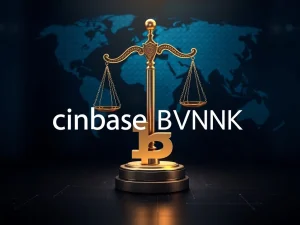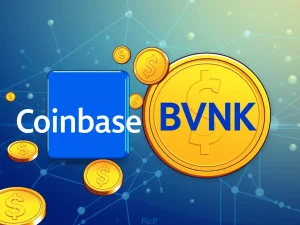Crucial Communication Infrastructure: Is the Public Internet a Bottleneck for Blockchain Performance?

Is the current public internet holding back blockchain performance? According to industry experts, the answer is a resounding yes. High-throughput blockchain networks are pushing the limits of existing communication infrastructure, creating a significant bottleneck that prevents them from reaching their full potential.
Understanding the Public Internet Bottleneck for Blockchain
Austin Federa, co-founder and CEO of DoubleZero Protocol, highlights the fundamental issue: the public internet wasn’t designed for the demands of modern blockchain networks. It was built primarily for a client-server model – one big server talking to many smaller clients. This structure struggles with the peer-to-peer, high-bandwidth, and low-latency requirements of decentralized systems.
Validators in blockchain networks constantly switch roles, from consuming massive amounts of data to broadcasting it globally. This requires immense resources on both ingress and egress, a challenge the public internet often cannot handle efficiently. Federa points out that this communication infrastructure constraint is now the primary limiting factor for blockchain performance, surpassing compute power or software limitations.
Introducing the DoubleZero Protocol Solution
Addressing this critical issue is the goal of the DoubleZero Protocol. Founded by Austin Federa in December 2024 after leaving the Solana Foundation, DoubleZero aims to build dedicated, high-speed fiber optic communication rails specifically for blockchains. The project focuses on reducing latency – the delay in data travel – and increasing bandwidth – the volume of data that can be transferred at once.
This dedicated communication infrastructure promises several key benefits for high-throughput blockchain networks:
- Increased Speed: Faster data propagation across the network.
- Lower Fees: Improved network efficiency can lead to reduced transaction costs.
- Tighter DeFi Spreads: Quicker data updates benefit decentralized finance trading.
- New Use Cases: Enables applications previously limited by communication constraints.
DoubleZero’s Path Forward
DoubleZero has been actively developing its network. In April 2025, they conducted a validator token sale, offering token purchase agreements to accredited investors and existing validators from major high-throughput blockchain networks like Solana, Celestia, Sui, Aptos, and Avalanche. This step is crucial for building the foundational validator set for their network.
Following a successful $28 million capital raise, the DoubleZero team is targeting a public mainnet launch in the second half of 2025. The increasing demands of sophisticated blockchain projects, according to Federa, necessitate this kind of dedicated, high-performance communication infrastructure to truly unlock the next phase of blockchain development.
Why is Dedicated Infrastructure Needed for High-Throughput Blockchain?
As blockchain technology matures and transaction volumes soar, the need for specialized infrastructure becomes apparent. While the public internet serves general purposes well, it lacks the guaranteed quality of service, low latency, and symmetric bandwidth required for consensus mechanisms and rapid data synchronization across globally distributed nodes essential for high-throughput blockchain operations. Projects like DoubleZero are stepping in to fill this gap, providing the underlying physical layer necessary for blockchains to scale further and support more demanding applications.
Conclusion: Paving the Way for Enhanced Blockchain Performance
The public internet bottleneck is a real challenge for achieving optimal blockchain performance. Projects like DoubleZero Protocol, by building dedicated communication infrastructure, are offering a potential solution to overcome these limitations. By focusing on reducing latency and increasing bandwidth through fiber optics, they aim to create a more efficient, faster, and capable environment for high-throughput blockchain networks. This development could pave the way for lower transaction costs, improved DeFi markets, and the emergence of entirely new blockchain use cases, ultimately helping the industry mature and scale effectively.







